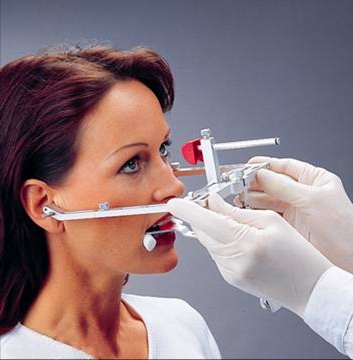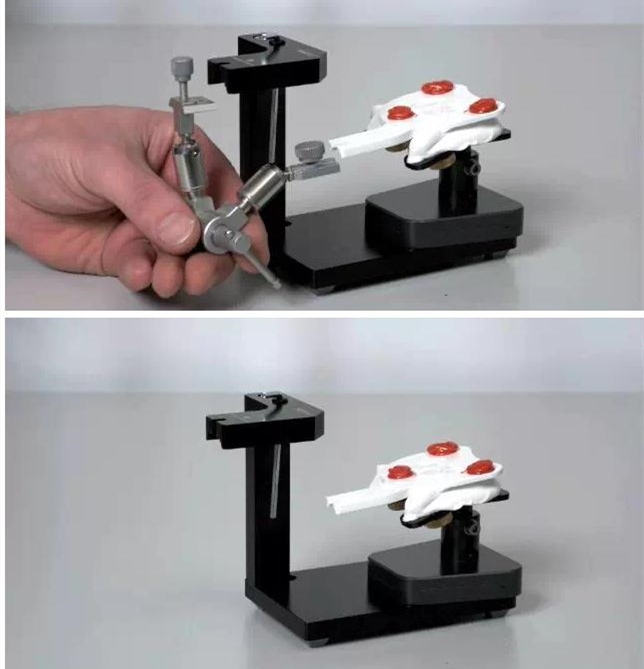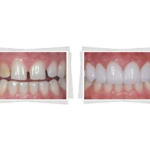- Your cart is empty
- Continue Shopping
Facebow Transfer In Complete Denture To Beautify Your Esthetic Appearance

Science and technology have seen great advancements over the past few years. And so is the medical field. If we speak about dentistry then it has seen different advancements too. Facebow transfer in complete denture is one such trend in the field of dentistry that has taken the world over by storm.
Facebow Transfers
A facebow is a caliper-like instrument that records the connection of maxillary teeth to condyle position while it (maxillary teeth) is in axis position of terminal hinge allowing the information to be shifted to the articulator at the time of dental casts.
To determine the hinge axis, techs use a locator and facebow. The average value facebow record is considered sufficient for the design.
Facebow Transfers Purpose
By now you may have understood the facebow transfer purpose. It records the link between a patient’s maxillary teeth in 3 planes including space & transferring the information to an articulator for adjustments to simulate your jaw movements.
The facebow record this relationship in two-fold which are stated below:
- Establishing the functional connection of a patient’s maxillary teeth to the rotational axis for effective functioning
- Analyzing esthetic connection of the patient’s maxillary teeth with the face for maximum esthetics
Assembling the Facebow Transfers Parts
Let us see the parts of the artex dental and facebow mechanism before seeing how to assemble them all.
| Parts | Purpose |
| U Shape Frame | Attaches different parts of the facebow using multiple clamps |
| Condylar Roads | Metallic Balls for both the edges of the frame |
| Bite Forks | Plates linked with occlusal rims. On the top, a wax item is placed for recording occlusal orientation |
| Locking Frame | Assists Bite Forks to connect with the frame |
| Third Reference Point | Facebow Orientation |
Now have a look at how to assemble these parts for exactly recording the relationship.
1) Place the nasion relator at the U-shaped frame crossbar and use screws to tighten it
2) Link the stem assembly. Ensure attaching the short length post vertically to the crossbar and then tighten with screws
3) Put the wax or impression above the bite fork in the incisal location followed by the molar area on both edges. There is a mark on the bite fork that correspond to the middle point of the dental line
4) Place the bite fork inside the mouth of the patient exactly like obtaining an impression. However, the incisal corners of upper centrals on the wax or impression. You can also put the cotton rolls under the bite fork so that the patient can easily bite as well as hold the same
5) Advise the patient to put on the facebow earpieces into his/her ears. Now alter nasion adjacent to the nasion of the patient. In the meantime slide its double clamp above the stem of the bite fork and use the big screw to tighten it in the front
6) Next alter the facebow (Artex dental mechanism) to ensure the pointer of the orbit is at an equal height to the patient’s nasal point
7) Tight the stem with clamps so that it completely supports the facebow. This will help the oral facebow instrument to capture the occlusion plane to the patient’s reference plane
8) Lose the nasion relator’s screw followed by loosening the big screw in the front
9) Ask the patient to pull back the earplugs and open his/her mouth. Now, take out the bite fork gently and the facebow then.
10) Take out the crossbar’s screw for removing the assembly of the bite fork. This is now ready for lab processing
Step-By-Step Guide To Facebow Transfers

Once your fully adjustable dental articulator is ready here is how you can start with the process.
Take the bite fork assembly,
1) Locate incisal pen @ 0
2) Position the mounting plate to the top of the U-Shaped frame
3) Position the support of the bite fork to its mounting plate
4) Now place the assembly to the mounting fixture & tighten it with a thumbscrew
5) Index the top cast to bite fork in the fully adjustable dental articulator
6) Close the top frame to check the way a plaster is required to create a link amid the mounting plate and cast model
7) Now you can capture the occlusion plane (relates to reference plane) that connects this cast with the top plate
8) Finally open the articulator and take out the cast with its mounting plate to finish the cast using plaster

Importance of Facebow Transfers
The importance of facebow transfer purpose has often been a controversial topic in the field of dentistry for several years. Logan, Symmons, Stansberry & Craddock considered the exercise of NO use.
Lazzari, on the contrary, brought into everyone’s notice the importance of a facebow transfer as it allows exact utilization of rotational points laterally for teeth arrangement.
It helps to secure the positioning of the anterior-posterior of the cast relating to condyles. It sets an appropriate horizontal plane along with the incisor plane that helps to position the cast in the articulator vertically. It helps to incorporate the errors owing to the cast’s blind orientation on the articulator.
Facebow transfers help in any case wherein maxillae are not on the equal spot for the reasons such as:
- Broken Teeth
- Broken New Crowns
- Headaches
- Clicking Joints
Facebow transfers also help in other instances like Wear & Esthetics. As you can see the facebow transfer acts as a boon for those who face these issues in their lives respectively.
Conclusion
Facebow transfer in complete denture is a comprehensive solution if you have broken a tooth in an accident or for an esthetic appearance. But it is of utmost importance to set the articulator in the correct position for appropriate measurements. Failure to apply the facebow wrongly results in occlusion error.
The hinge axis acts as a primary element of the entire process and therefore it should be appropriately captured and then transferred for the patient’s correct representation which helps in acceptable biological restoration. The facebow should act as an important part of the whole prosthodontic treatment.
The treatment is safe and effective. Still, I advise you to speak with your dentist and get the best solution about the facebow transfer procedure.




